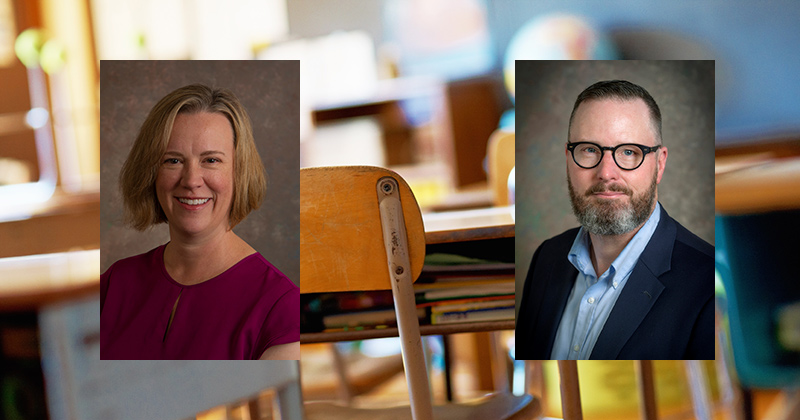Literacy courses | UDaily
Photos by Office of Communications and Marketing and iStock
April 29, 2022
Teachers and future teachers often want to include topics on equity and social justice in their classrooms – and are expected to do so under National Education Standards – but the addition of new material to their school schedules Busy teaching can be daunting.
Now, however, a project developed at the University of Delaware aims to provide middle and high school language arts teachers with resources they can easily incorporate into their current literacy curriculum. The research-based project is led by Jill Ewing Flynn, professor of English, and William E. Lewis, professor of education, and is supported by the UD Partnership for Public Education and the Gates Foundation.
“Jill and I have been writing together for a while and we’ve always had a focus on social justice,” Lewis said. “This project seemed like a great opportunity to show teachers how they could integrate social justice and equity into the work they were already doing. The aim is to provide children with a variety of texts and prepare them to read difficult texts – all part of the literacy program.
The result, Flynn said, was a toolkit known as EquityQTS, which is accessible on a publicly accessible website and consists of resources teachers can easily incorporate into their existing lesson plans. While developing the toolkit, she and Lewis worked with UD English Teaching alumni Taria Pritchett, high school English teacher and Brandywine School District Teacher of the Year, and Casey Montigney, college English teacher and member of the Delaware Professional Standards Board.
“We believe we’ve come up with a good framework that will help teachers by making it easier for them to plan and not make their classroom work any more burdensome,” said Flynn, who teaches undergraduate methods classes and coordinates student teaching in the undergraduate program. UD English Education.
EquityQTS resources are centered around a framework known as “Quad Text Sets”. It’s a system that many educators are already using to develop their students’ reading, writing, and comprehension skills as they prepare to read challenging classic text such as Kill a mockingbird or more contemporary texts like All American Boys or The hate you give.
Before asking students to read this “target text” itself, teachers select two simpler texts – one of them based on a video or visual – on a related theme or topic. These texts allow students to develop their basic knowledge of the subject so that they are better prepared and engaged when reading the target text. A fourth text is then chosen to help students make connections to the target text and deepen their understanding of issues of equity and social justice.
As Flynn and Lewis now strive to share the resources with teachers, they published an article about their project in the current edition of Literacy todaythe online magazine of the International Literacy Association.
In the article “A framework for equity in education”, the researchers write that by strategically using high-quality young adult literature, teachers “can expose students to multiple perspectives, acquire foundational knowledge needed to critically address issues of equity and to provide students with a stimulating volume of texts that build their literacy skills.
“We all want students to have interesting and engaging texts to read while developing an awareness of social justice and equity,” said Lewis, who teaches undergraduate and graduate courses in English at the UD School of Education. “But we also know that teachers already have a lot to do. So we designed this to fit into the existing curriculum, not to be an add-on for teachers.
For Casey Montigney, who worked on the project as a teacher in the Christina School District and is now an instructional coach helping other teachers in the district, EquityQTS relies on the quad text system she knows educators are already using. By focusing on social justice and equity when choosing texts for their lesson plans, teachers can give their students a broader view and broaden their perspectives, she said.
“The goal is for students to be able to read and understand rigorous text for their grade level,” she said. “It’s those skills and those concepts that are important. And today’s students, even college kids, want to talk about social justice issues. They are aware of what is happening in the news and they want to know more about it.
Flynn and Lewis hope that teachers of other subjects such as social studies might also find the resources helpful in their own classrooms. Social justice and equity are currently part of some national education standards as well as accreditation standards for teacher education programs.
The researchers recently met with an official from the Delaware Department of Education, who invited them to present at an upcoming meeting of the Literacy Council, a group of literacy experts from school districts across the state.
“We want to spread the word that this resource is available to them,” Flynn said. “We know teachers want to cover these issues and they can use the support.”


Comments are closed.